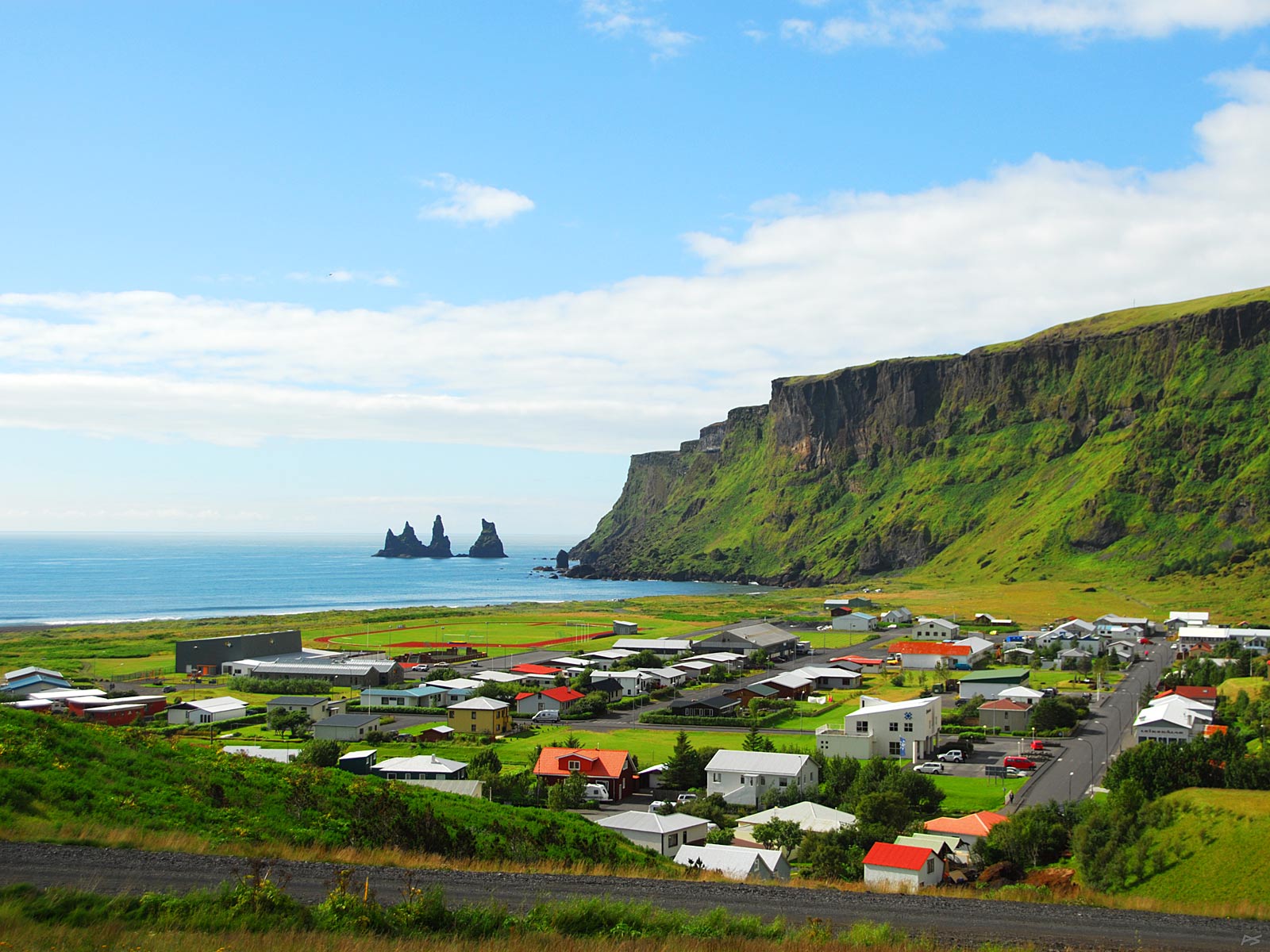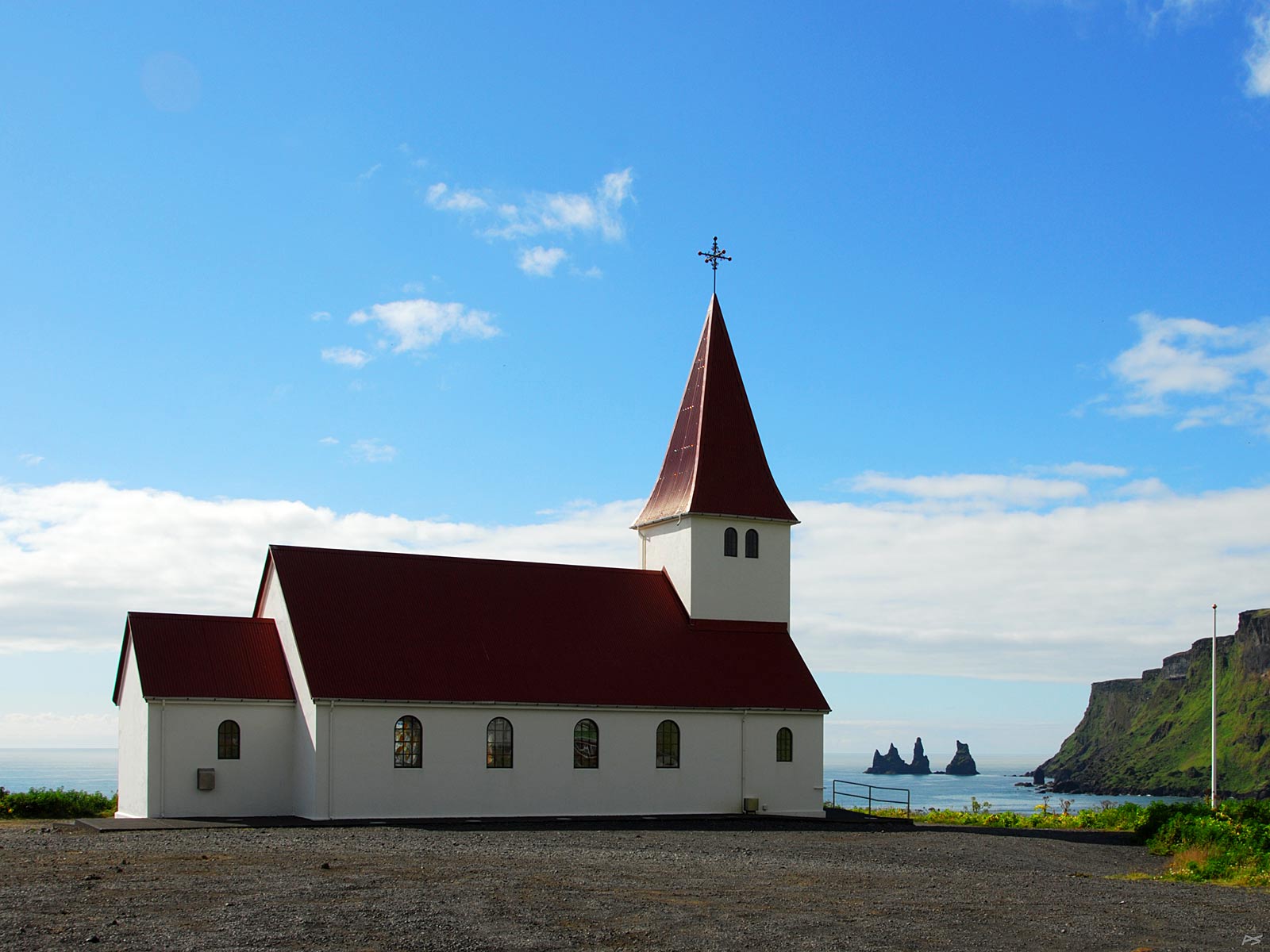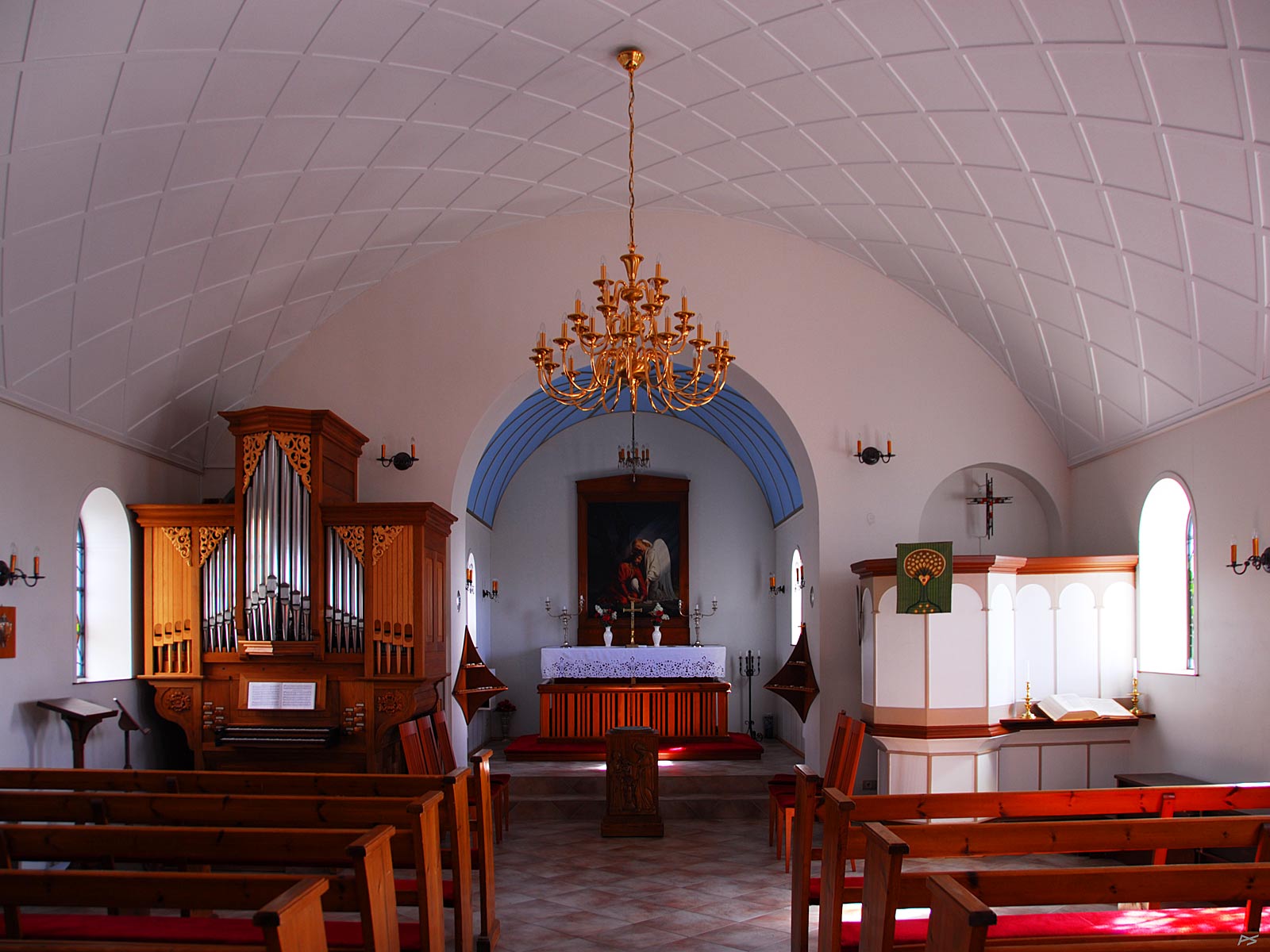between the volcano and the deep blue sea

(2013-08-12)
Seen from the parish church, a part of the village Vík í Mýrdal, the home of less than three hundred souls. Near the centre of the pictures, the famous lava pillars Reynisdrangar in the sea outside the mountain Reynisfjall. Vík lies south of and close to the glacier Mýrdalsjökull that hides the feared volcano Katla.

(2013-08-12)
Víkurkirkja, the parish church, built 1930-34, the architect being Guðjón Samúelsson who also designed Hallgrimskirkja in Reykjavík.

(2013-08-12)
Inside Víkurkirkja.

(2010-06-02)
The Ring Road runs through Vík, and many tourists come to walk on this black sand beach, enjoying the sight of the waves and the sight of Reynisdrangar (drangar=rock-pillars), actually one of the best known photo motifs in Iceland. Another activity is collecting the small pebbles, and maybe, unintentionally, getting wet from the seventh wave.

(2013-08-12)
The previous photo was taken in 2010. Coming back in 2013, the beach was drastically changed by this groyne. This is the explanation:
For many years the ocean waves have transported sand away, making the beach shrink at a rate of about ten meters per year, and now threatening the village and the Ring Road. In 1918 the beach had been eroded back to about the same position that it has today. Then Krafla under the glacier Mýrdalsjökull erupted, melting lots of ice. The flood (jökulhlaup) reached the sea 6–14 kilometres east of Vík. Here it deposited large quantities of sand, extending the coastline in this area up to 2.8 kilometres outwards. The waves immediately started to move this sand eastwards and westwards, making the coastline at Vík move outwards. In 1970 it was 500–600 meters out, but after that it shrunk steadily to what it is today.
The groyne was built to slow down the erosion. To slow it down further, it has been suggested to build a second groyne.

(2010-06-02)
A new eruption of Katla is overdue (2022). Maybe the same thing will happen as last time, and the black beach at Vík will be saved for another century. Or the jökulhlaup will run right through the village... In that case the inhabitants are prepared: Pick up the children and family photo albums and run to the church. Somehow they believe that this is a safe place.
